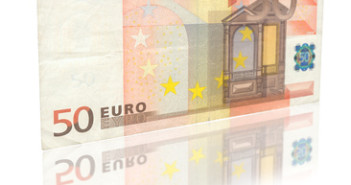We’re seeing more of the same from EUR/USD, as the pair trades just above the 1.36 line in Wednesday’s European session. In economic news, German GfK German Consumer Climate climbed sharply in May. Italian Retail Sales also improved last month. In the US, there are two releases on the calendar – Core Durable Goods Orders and Final GDP.
 Here is a quick update on what’s moving the pair.
- EUR/USD edged higher late in the Asian session but retracted back to the 1.36 line in the European session.
- Current range:Â 1.3585 to 1.3650.
Further levels in both directions:

- Below: 1.3585, 1.3550, 1.35, 1.3450, and 1.34.
- Above: 1.3650, 1.3677, 1.37, 1.3740, 1.3785, 1.3830, 1.3865 and 1.3905.
- 1.3585 is an immediate support line, serving as a perfect separator of ranges.
- 1.3650 is the next line of resistance. 1.3677 is stronger.
EUR/USD Fundamentals
- 6:00 GfK German Consumer Climate. Estimate 8.6 points. Actual 8.9 points.
- 8:00 Italian Retail Sales. Estimate 0.2%. Actual 0.4%.
- 12:30 US Core Durable Goods Orders. Estimate 0.3%.
- 12:30 US Final GDP. Estimate -1.8%.
- 12:30 US Durable Goods Orders. Estimate -0.1%.
- 12:30 US Final GDP Price Index. Estimate 1.3%.
- 13:45 US Flash Services PMI. Estimate 58.6 points.
- 14:30 US Crude Oil Inventories. Estimate -1.2M.
*All times are GMT.
For more events and lines, see the EUR/USDEUR/USDEUR/USDEUR/USDEUR/USD.
EUR/USD Sentiment
- German consumer confidence jumps: On Wednesday, GfK German Consumer Climate looked sharp, as the key indicator jumped to 8.9 points, after spending the past four months stuck at 8.5 points. The estimate stood at 8.6 points. This strong reading comes on the heels of a disappointing German Business Climate, which lost ground for a second straight month, dipping below the 110 line for the first time since December. As the largest economy in the Eurozone, German releases are closely watched by analysts, and key German data can affect the movement of EUR/USD.
- Positive numbers out of US: US data looked sharp on Tuesday, with strong gains in consumer confidence and housing numbers. CB Consumer Confidence improved to 85.2 points, beating the estimate of 83.6 points. It was the strongest level since December 2007. New Home Sales had a superb reading, jumping to 504 thousand, crushing the estimate of 442 thousand. It was the key indicator’s best showing since August 2008. If upcoming indicators continue to point upwards, we could see the US dollar gain strength at the expense of the euro.
- No surprises from Fed: The Federal Reserve tapered QE for the 5th time to $35 billion/month as expected. The Fed also hinted that interest rates will continue to stay low for the foreseeable future, which likely means that we won’t see any rate hikes before the first quarter of 2015. With regard to economic activity, the Fed noted that the recovery is continuing, but it reduced its forecast of economic growth to 2.1-2.3%, down from an earlier forecast of around 2.9 percent. The bottom line? There were no dramatic items in the Fed statement, with one analyst describing current Fed policy as “steady as she goesâ€. The dollar lost ground against its major rivals following the statement.
- Eurozone PMIs slip: Eurozone PMIs are key indicators of growth in the services and manufacturing sectors, and across the board, the May figures fell shy of their estimates. The German and Eurozone figures remained above the 50-point level, pointing to expansion. However, the French figures remained below the 50 mark, pointing to continuing contraction in the manufacturing and services sectors of the Eurozone’s second largest economy. A worrying trend is that with the exception of Eurozone Services PMI, all of the PMIs posted their weakest reading in 2014.
- Eurozone inflation remains weak: So far, the euro did not lose enough ground even though various European interest rates have fallen after Draghi’s big announcement. This implies yet another month of low inflation in the euro-zone. We will get initial German numbers next week. If the euro remains strong and inflation continues falling, the ECB will have to be even more creative.
More: EURUSD Recovering Towards 1.3700 – Elliott Wave Analysis



